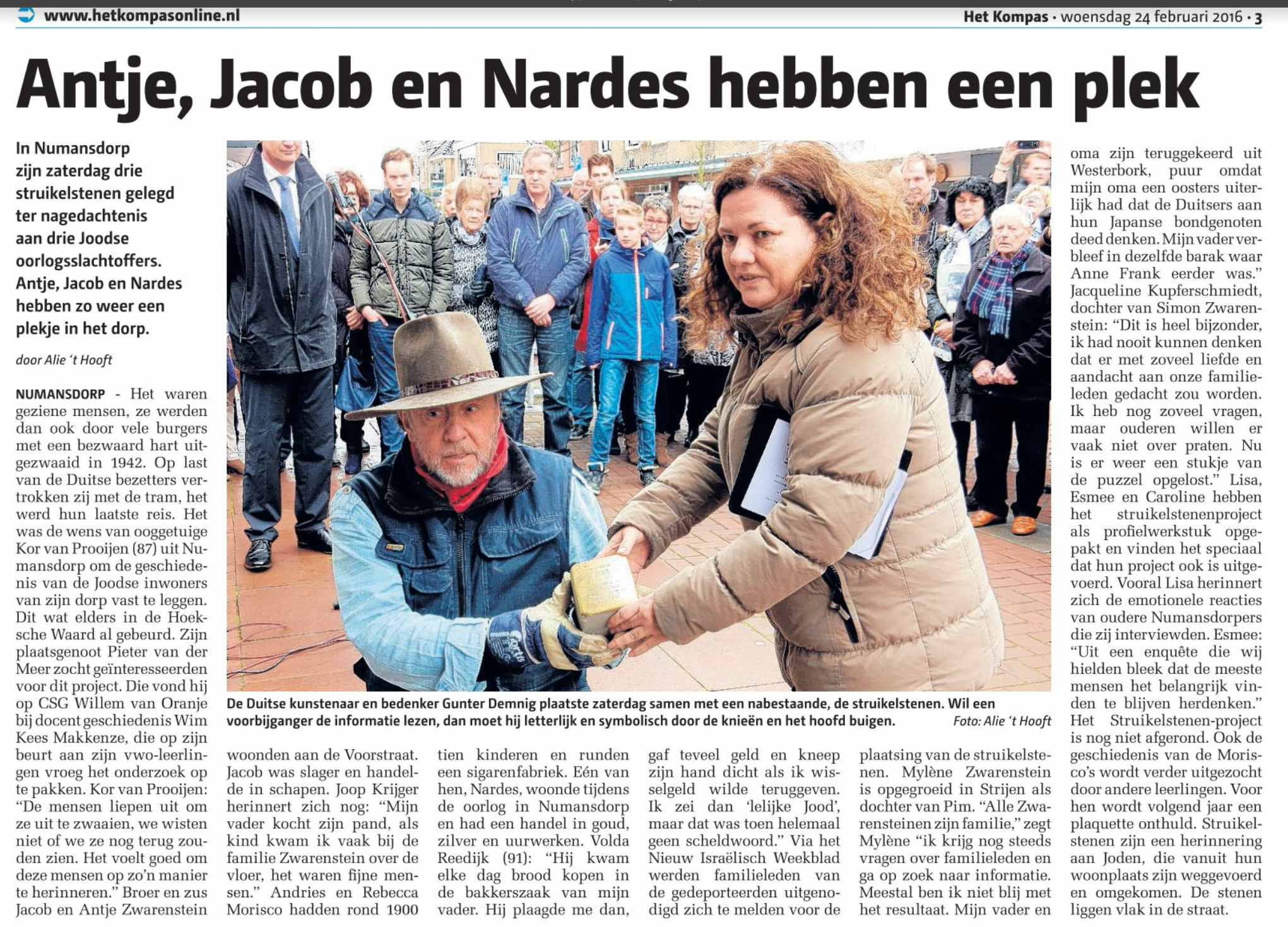'Antje, Jacob en Nardes hebben een plek.'('Antje, Jacob and Nardes have a place' - see English translation below.) |
|
 |
|
|
BACK
Last
Saturday, three trippingstones were placed in Numansdorp commemorating
the Jewish war victims.
Antje, Jacob and Nardes again have their place in the village. |
|
| Numansdorp - They
were people everybody liked to see, so the villigers hearts were heavy
with sorrow when they were put on transport in 1942. As commanded by
the German occupiers, they left on the tram, it became their last trip.
It was the wish of eyewitness Kor van Prooyen (87) from Numansdorp to
record the history of the Jewish villigers. In other places in the
Hoeksche Waard this already happened. His fellow villager Pieter van
der Meer searched for others, interested in the project. He found them
in the Willem van Oranje school and history teacher Wim Kees Makenze,
who asked his senior class to pick up the research. Kor van Prooyen:
"All people came out to bid them farewell, we didn't know if we would
ever see them again. It feels good to remember these people this way." Brother and sister Jacob and Antje Zwarenstein lived in the Voorstraat. Jacob was a butcher and traded in sheep. Joop Krijger remembers: "My father bought their house. As a child, I visited the Zwarenstein family a lot, they were nice people. Around 1900, Andries and Rebecca Morisco had ten children and run a sigar factory. One of them, Nardes, lived in Numansdorp during the was and traded in gold, silver and watches. Volda Reedijk (91): Everyday he came to buy bread in my fathers bakery. He would tease me, gave too much money and squeezed his hand shut when I wanted to return him his change. I would call him an 'ugly Jew', bit that wasn't an insult then. Through the New Israeli Weekly, surviving relatives of the deported were invited to come forward for the placing of the Trippingstones. Mylène Zwarenstein grew up in Strijen as the daughter of Pim. "All Zwarenstein are family." Mylène says "I regularly get questions about family members and do my research. Most of the times, the things I find, don't make me happy. My father and grandmother returned from Westerbork (transit camp red.), purely because my grandmother had an oriental look, which reminded the Germans of their Japanese allies (this last sentence was not what Mylène told -red). My father stayed in the same barrack were Anne Frank was before." Jacqueline Kupferschmiedt, daughter of Simon Zwarenstein (this is incorrect - red.): "This is very special. I never could have thought that our relatives would be remembered with so much love and attention. I still have so many questions, but the older people often don't want to talk about it. Now another piee of the puzzle is solved." Lisa, Esmee and Carolin, who took on the project as part of their filans essay, think it is very special that their project was ectually executed. Especially Lisa remembers theemotional reactions of the elderly villagers she interviewed. Esmee: "From the interviews we conducted is becane clear that most people thought it is important to keep remembering.+ The Trippingstone project isn't finished yet. Also the Morisco family hostory is being researched more by other students. There wil be a plaquette reveiled for them next year. Trippingstones are a commemoration to Jews, who were deported from their hometowns and killed. The stones are placed in the pavemen |